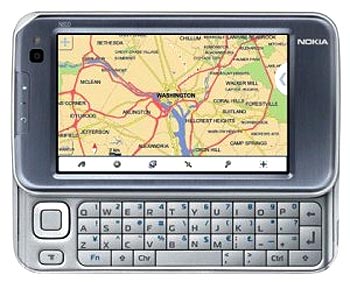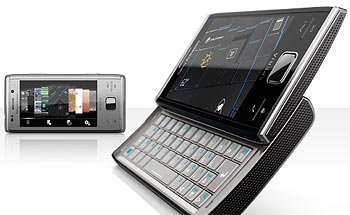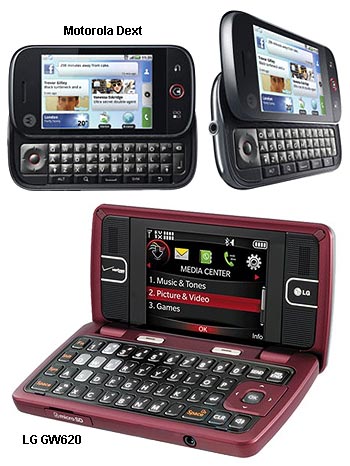 | « Back to article | Print this article |
Five touchscreen phones to watch out for
The Sony Ericsson Xperia and Nokia N97 were among the first with this feature set and in the next few months consumers can look forward to similar handsets across a wide range of platforms.
Here are five of the most interesting models which will be battling it out this year.
Nokia N900
The N97 was Nokia's big flagship release this year but it turns out that they had another ace up their sleeve with a device that may be significantly better.
The N900 has the same broad feature set of the N97. A 3.2 inch resistive touchscreen with a slide-out QWERTY keyboard, 32GB of inbuilt storage along with a microSD card slot, a 5 megapixel camera, GPS and so on.
But it surpasses the N97 in two big ways. First one of the biggest gripes about the N97 was the relatively low horsepower: just 128MB of RAM and a 434Mhz processor. The N900 doubles the RAM (256MB) and comes with a 600 Mhz processor which should make for a better multi-tasking environment as well as a smoother user experience.
Secondly and perhaps more importantly, the N900 will be the first smartphone running Nokia's Maemo operating system.
Maemo is a Linux-based OS that Nokia has developed for its N-series of tablets like the N800. It already has a dedicated base of programmers producing open source applications and the arrival of the N900 will only expand it.
Sony Ericsson Xperia 2
Sony Ericsson's Xperia was perhaps the first all-in-one device with a touchscreen, QWERTY and high-end media features and its successor continues in the same vein.
The camera is better this time with 8 megapixels and a range of the latest features like geotagging, face detection, touch focus and an image stabiliser. It also shoots video at a higher resolution of 800X480 at 30 frames per second.
The Xperia 2 will run Windows Mobile 6.5 which is the latest version of Microsoft's smartphone OS. 6.5 tries to improve the user interface making it more attractive and finger-friendly.
In addition Sony Ericsson has expanded its own Xpanels interface which runs on top of Windows Mobile and features different interactive home screens.
The Xperia comes loaded with four games including Xtrakt which is a 3D racing game which uses the accelerometer and responds to hand movements. The device comes with a range of high-end features like GPS, TV-out and a 3.5mm audio jack.
Samsung Omnia Pro
The Omnia Pro features a 3.5-inch touch screen with a resolution of 800 x 480. It uses the newer AMOLED technology which produces a brighter, more colourful display while also consuming less power.
The phone comes with an 800Mhz processor and a dedicated graphics accelerator so it should be able to make full use of the beautiful screen for gaming and video playback.
The Omnia Pro runs Windows Mobile 6.1 but Samsung has added its own Touch Wiz UI (user interface) on top of the OS making it more attractive and user-friendly. It comes with a 5 megapixel camera with autofocus and flash as well as advanced features like face detection and image stabiliser. Other features include GPS, accelerometer and TV-out.
Motorola Dext and the LG GW620
Finally and most recently there were a couple of new touchscreen phones announced by Motorola and LG which will run Google's Android OS. Like Maemo, Android is a Linux-based OS which is much more customisable and flexible than most of its competitors.
As you would expect, it has the best integration with Google's mobile services and going forward it holds a lot of promise by combining an open software environment with lots of hardware choices.
The announcement of new high-end phones for Android is therefore definitely good news. The Motorala Dext comes with a 3.1-inch capacitive screen and a sliding keyboard as well as GPS, a 3.5mm audio jack and a 5 megapixel camera.
The LG GW520 has a similar feature set with a 3-inch touchscreen, keyboard, GPS and a 5 megapixel camera.



